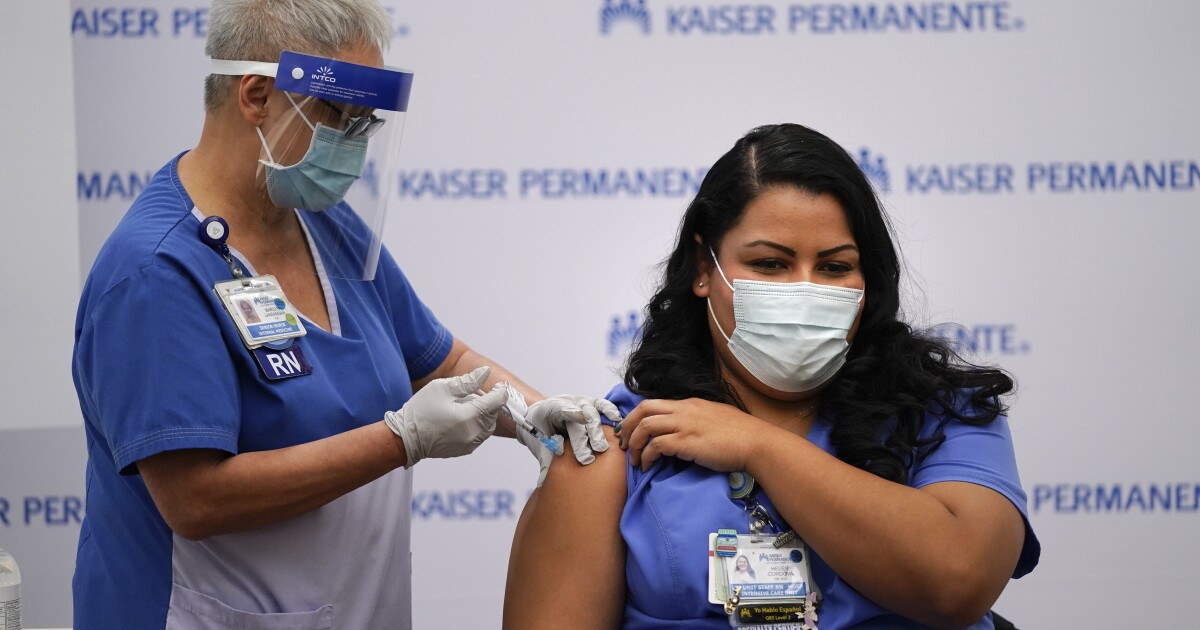Op-Ed: Stop dismissing all vaccine skeptics as anti-science

Infection and death rates caused by COVID-19 are raging, but the rollout of the vaccines brings new hope that the pandemic will end and we will soon be back to normal. Yet, according to a recent Pew Research study, 40% of Americans are wary of receiving a vaccine. What to do?
Vaccine skepticism has a long history in the United States. While vaccines have proved to be overwhelmingly safe, dissenters have always worried about safety. Vaccine skeptics are often branded as anti-science, but most are not opposed to vaccination across the board. Some advocate vaccine choice and alternative childhood immunization schedules. Opposition comes from people with diverse political, racial, religious and socioeconomic backgrounds. This is why the term “anti-vaxxer” doesn’t describe any single group and does more harm than good when it is used as a pejorative, driving a wedge between doctors and patients.
My research on the history of vaccine hesitancy in American culture suggests there are ways to reduce anxiety. A lot will depend on public officials openly addressing safety concerns rather than just dismissing opponents as anti-science conspiracy theorists. Here are some steps the Biden administration should take in the coming weeks.
First, rename Operation Warp Speed. Emphasizing speed reinforces a common concern that the vaccine was a magic trick that could only have been performed by sleight of hand. In fact, scientists have been working on a coronavirus vaccine for years. The basic science research supporting messenger RNA vaccines goes back to the mid-2000s, and the article that identified how to elicit the strongest immune response to coronaviruses was published in 2017. It was only because of the longstanding investment made in this research that scientists were able to develop the game-changing mRNA approach that made it possible to roll out the Pfizer and Moderna vaccines in record time.
Vaccine skeptics tend to distrust the authority structures that support science, but not science itself. The misleading memes populating skeptics’ social media accounts focus on corruption, implying that Big Government, Big Pharma and Big Investors have selfish financial interests in a “fast-tracked” vaccine. These ideas are influential and difficult to debunk.
It is critical for Americans to know that the government took considerable financial risks with a variety of new vaccines. In preordering hundreds of millions of doses of the COVID-19 vaccines, the U.S. government could have lost a lot of money if the clinical trial data proved inconclusive. As Dr. Anthony Fauci, the director of the National Institute of Allergy and Infectious Diseases, recently explained, the “warp speed” aspect of the operation was a monetary gamble, not a safety one. The techniques behind the vaccines now coming to market have been in development for at least five years, not five months.
Second, be completely transparent about side effects and why they may occur. Recent safety data published in the New England Journal of Medicine found that 50% to 60% of Pfizer vaccine trial recipients experienced fatigue and/or a headache after their second dose. Close to 20% of trial participants developed a fever. This is not a flu shot. It is important for Americans to know that they might feel lousy for a day or two after they get vaccinated. While children’s vaccines often require multiple doses, adults are not used to this model. Let’s make it clear that maximum effectiveness requires a second dose.
And, while very unlikely, severe reactions occur. A healthcare worker in Alaska who got the Pfizer vaccine on Tuesday developed a serious allergic reaction and was hospitalized overnight. Under guidelines from the Food and Drug Administration, recipients are supposed to remain in place for 15-30 minutes in case they need rapid treatment.
Finally, it is important to offer citizens reasonable incentives for getting vaccinated. Employers could be incentivized to provide workers with a paid sick day or two after they receive the vaccine. Businesses supporting employees in this way could build trust in the vaccines’ safety and ease the burden of potential recovery time. This type of public-private partnership would address vaccine concerns more effectively than the direct payments some are proposing. Although money (usually) talks, direct payments could fuel conspiracy theories of the federal government bribing people with cash.
If we have learned anything from this pandemic, it is that community-focused public health messaging is often ineffective in encouraging safety precautions. It is easy to scold vaccine skeptics as anti-science, but my research on these groups shows that they have different concerns — parents are worried about one-size-fits-all approaches to children’s immunizations while political liberals and libertarians are focused on potential corporate corruption. Black Americans and other people of color are more likely to express distrust in medical innovation, in part based on a modern history of governmental abuse in the name of science.
Understanding and engagement are the way forward. Meaningfully addressing vaccine skepticism requires multipronged efforts at all levels of care — from broad federal messaging to individual physician-patient interactions. We need to start now if we want to have widespread vaccine adoption in 2021.
Kira Ganga Kieffer, a doctoral candidate in religious studies at Boston University, is writing a book on vaccine skepticism in American history.
*** This article has been archived for your research. The original version from Los Angeles Times can be found here ***

